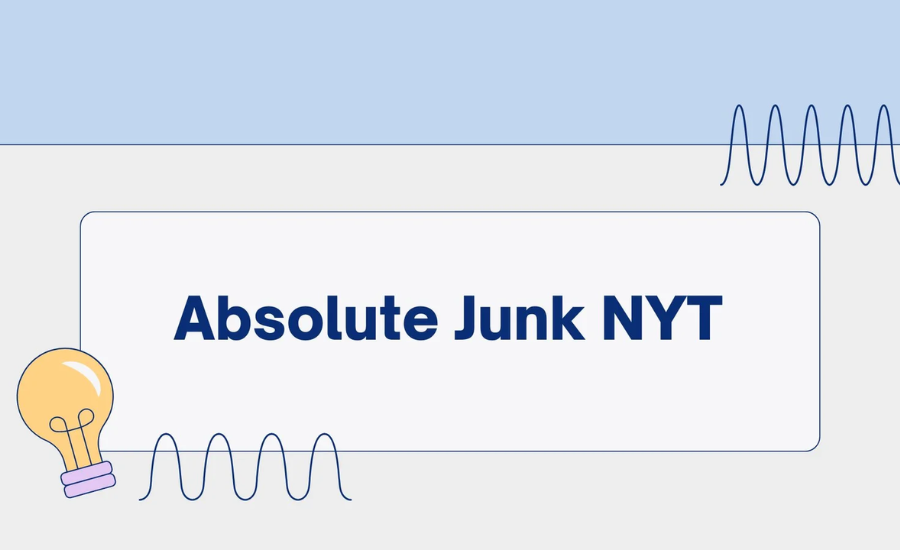Decoding the Clue: Absolute Junk NYT and the World of Crossword Puzzles
Crossword puzzles, especially those curated by esteemed publications like The New York Times (NYT), are a delightful challenge for word enthusiasts. Among the myriad of clues, phrases like “absolute junk NYT” stand out for their cryptic nature and push solvers to think outside the box. But what makes these clues so intriguing, and how can solvers approach them effectively? Let’s dive into the fascinating world of crossword puzzles and explore the nuances of interpreting such cryptic clues.
History
Crossword puzzles have a rich history dating back to the early 20th century. Introduced as a simple word game, they have evolved into a blend of language, logic, and trivia. The New York Times crossword, launched in 1942, quickly became a benchmark for quality and creativity in puzzle design.
The phrase “absolute junk NYT” could represent a variety of answers, depending on its placement within a crossword. While seemingly straightforward, such clues often employ subtle misdirection or require familiarity with idiomatic expressions, slang, or niche references.
Challenge
The real allure of clues like “absolute junk” lies in their ability to test a solver’s cognitive flexibility. The NYT crossword is known for its diverse difficulty levels, with Monday puzzles being the easiest and Saturday puzzles presenting the greatest challenge. Clues involving phrases like “absolute junk” often appear in tougher puzzles, where solvers are encouraged to think abstractly.
For example, “absolute junk” might not refer to garbage in a literal sense but could hint at words like “drivel,” “trash,” or even more playful or metaphorical terms like “nonsense” or “balderdash.” Understanding the puzzle’s theme, if any, can provide additional context.
Strategy
When tackling tricky clues, consider the following approaches:
- Think Broadly: Expand your interpretation of the phrase. “Absolute junk” could relate to physical waste, poor-quality items, or even abstract ideas like misinformation.
- Use Crosses: Leverage intersecting clues to narrow down possibilities. Crossword grids are designed to provide interconnected hints, making the solving process more logical.
- Consider the NYT Style: The NYT crossword is known for its clever wordplay, puns, and double entendres. Keep these tendencies in mind when interpreting clues.
- Look for Patterns: Certain clue styles recur in NYT puzzles. For instance, quotation marks often signify a colloquial or humorous answer.
Creativity
One of the most captivating aspects of NYT crossword puzzles is their celebration of language diversity. Solvers encounter archaic terms, pop culture references, scientific jargon, and even foreign words. Clues like “absolute junk” showcase how language evolves, with words and phrases gaining new meanings over time.
For instance, “absolute junk” might evoke imagery of outdated technology or cultural artifacts, depending on the puzzle’s theme. This encourages solvers to consider the broader implications of language and its fluidity.
Examples
To illustrate the versatility of clues like “absolute junk,” let’s explore hypothetical examples:
- Clue: “Absolute junk, in slang”
Answer: “Garbage” or “Trash.” - Clue: “Absolute junk at a yard sale”
Answer: “Kitsch” or “Clutter.” - Clue: “Absolute junk on TV”
Answer: “Drivel” or “Schlock.”
These examples highlight how context significantly influences the interpretation of a clue. Without understanding the puzzle’s theme or surrounding answers, a single clue can remain a tantalizing enigma.
Tips
- Learn Common Tropes: Familiarity with recurring NYT crossword themes and word patterns is invaluable. Words like “ale,” “era,” and “etude” frequently appear due to their convenient letter combinations.
- Practice Regularly: Crossword solving is a skill that improves with practice. Start with simpler puzzles to build confidence.
- Expand Vocabulary: Reading diverse materials exposes you to varied expressions and niche terms often used in crosswords.
- Engage with Community: Online forums and social media platforms dedicated to crossword enthusiasts offer insights, tips, and camaraderie.
Fun
Part of the joy in solving NYT crossword puzzles comes from the element of surprise. Clues like “absolute junk” often elicit an “aha!” moment when the answer clicks. This sense of satisfaction is a testament to the artistry of crossword construction.
Impact
The NYT crossword is more than just a game; it’s a cultural phenomenon. With its clever clues and diverse references, it reflects the richness of language and its ability to connect people across generations. Clues like “absolute junk” may seem insignificant, but they embody the creativity and intellectual rigor that make the NYT crossword a timeless favorite.
Conclusion
The phrase “absolute junk NYT” is a window into the fascinating world of crossword puzzles. It challenges solvers to think beyond the obvious, appreciate the nuances of language, and enjoy the process of discovery. Whether you’re a seasoned solver or a curious beginner, embracing the complexity of such clues can make every puzzle an adventure. So next time you encounter a cryptic phrase like “absolute junk,” take a moment to appreciate the ingenuity behind it—and the endless possibilities it offers.







